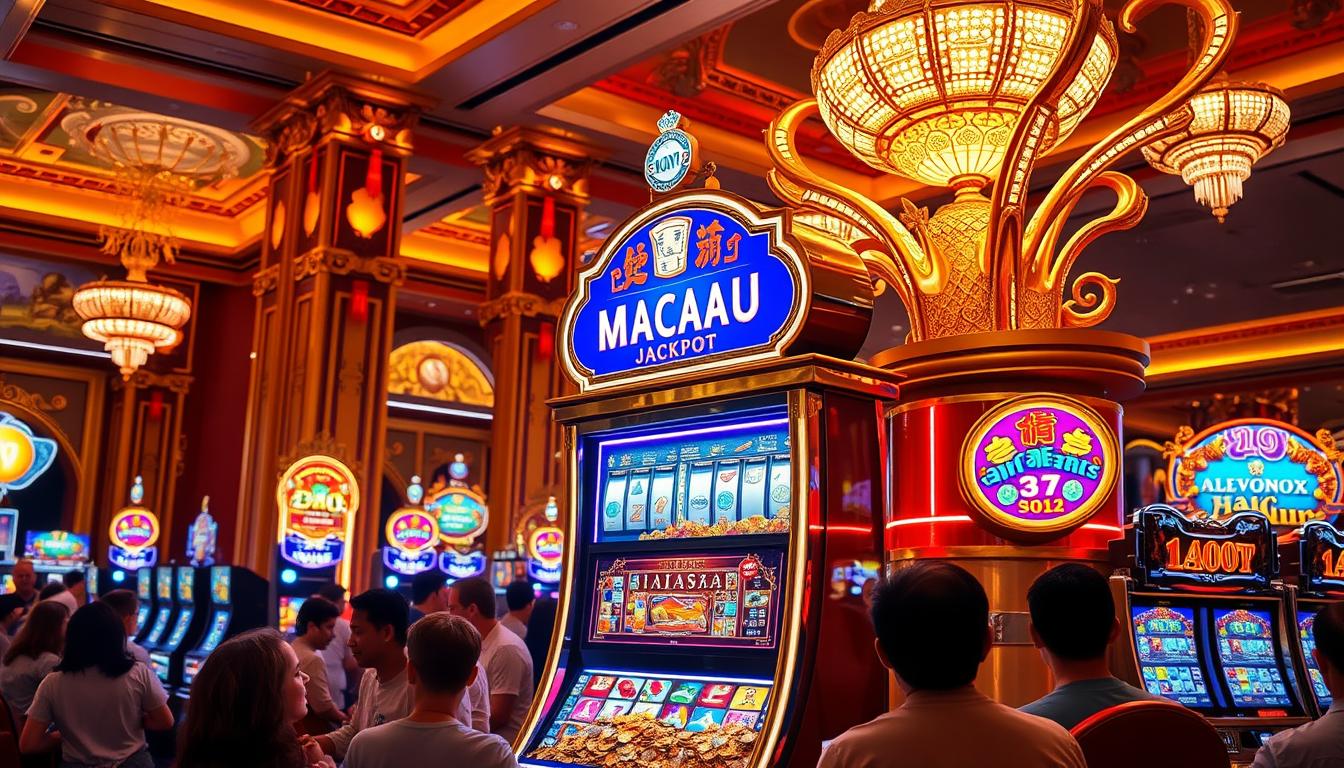RTP Max Slot refers to slot games with the highest Return to Player (RTP) percentages available, indicating the amount of wagered money a slot returns to players over time. Slots with a high RTP offer better long-term payout potential, making them the preferred choice for players looking to maximize their chances of winning.
These games often have RTP rates close to or exceeding 99%, which is significantly higher than average slots. This higher RTP means players can expect more frequent returns compared to lower RTP slots, though individual results still depend on random outcomes.
Choosing RTP Max Slots means focusing on reliable payout rates rather than just flashy features or themes. Understanding RTP helps players make informed decisions and optimize their gaming experience, especially when playing at top online casinos where these slots are available.
What Is RTP Max Slot?
RTP Max Slot refers to slot machines designed to offer the highest possible Return to Player (RTP) percentages. These slots are tailored to maximize long-term payout potential while balancing volatility and winning opportunities.
The concept involves understanding specific features that influence RTP and how these differ from standard slots. The importance of RTP Max Slot lies in its impact on players’ expected returns and overall gaming strategy.
Definition and Key Features
RTP Max Slot describes slot machines with RTP percentages close to or at the maximum theoretical level, often 97% or higher. This means, statistically, these slots return more money to players over time compared to average slots, which usually have RTP around 94–96%.
Key features often include:
- High RTP percentages (e.g., 98% or above)
- Lower house edge
- Varied volatility levels affecting win distribution
- Sometimes capped maximum wins to maintain RTP balance
Many RTP Max Slots include multiple payout features and bonus rounds that contribute to the overall RTP calculation.
How RTP Differs in Max Slots
In RTP Max Slots, the RTP value represents a theoretical long-term average payout, often calculated over millions of spins. However, real RTP during short sessions can differ due to volatility, which measures payout variance.
High RTP does not guarantee frequent wins but implies a higher percentage return over extensive play. Max slots might also adjust maximum win caps or gameplay features to maintain their high RTP balance.
Unlike standard slots where the RTP might be average or slightly optimized, RTP Max Slots often emphasize the balance between maximum RTP and player experience, factoring in possible game adjustments like bonus frequency to sustain payouts.
Why RTP Max Slot Matters
RTP Max Slot matters because it directly affects players’ long-term expectations and bankroll management strategies. A higher RTP generally means better theoretical value for players, reducing the casino’s edge.
Players who prioritize maximizing returns tend to seek out these slots, especially those with trusted RTP figures audited by independent bodies.
However, RTP alone doesn’t guarantee short-term wins or low risk. Understanding RTP Max Slot helps players make smarter choices, balancing RTP with volatility and max win potential for a more informed gambling approach.
How RTP Works in Online Slots
RTP in online slots determines how much money is paid back to players over time and affects their chances of winning. It involves fixed percentages, the casino’s advantage, and the game’s randomness to ensure fair outcomes.
Understanding Return to Player Percentage
Return to Player (RTP) is a theoretical percentage showing how much of the total money wagered a slot pays back over a very long period. For example, if a slot has an RTP of 96%, it means players can expect to receive $96 back for every $100 wagered, on average.
This value is calculated based on millions of spins, making short-term results unpredictable. RTP does not guarantee individual wins or losses but provides a baseline for expected returns over time.
House Edge Explained
The house edge is the casino’s built-in advantage, calculated as 100% minus the RTP. For a slot game with a 96% RTP, the house edge is 4%. This means the casino expects to retain $4 from every $100 wagered in the long run.
The house edge ensures the casino remains profitable while providing fair gaming. Players should note that a lower house edge generally means better odds but does not eliminate the risk of losing.
Role of RNG in RTP Max Slot
Random Number Generators (RNGs) are algorithms that produce unpredictable results in each spin of an online slot. RNGs ensure that every spin is independent and unbiased, supporting the fairness of the RTP percentage.
RNGs work behind the scenes to determine symbols’ outcomes, making it impossible to predict or influence wins. Compliance with regulatory standards requires regular testing of the RNG to maintain the advertised RTP in RTP Max Slot games.
Benefits of Choosing RTP Max Slot Games
RTP Max Slot games offer specific advantages in player experience and payout expectations. They are designed to provide clearer insights into return potential and promote fair gaming conditions, helping players make more informed decisions.
Maximizing Player Returns
RTP, or Return to Player percentage, directly indicates the average amount of wagered money a slot returns to players over time. Games with higher RTP values, typically above 95%, suggest more frequent or larger payouts compared to lower RTP slots.
For example, a slot with a 98% RTP means players can expect to get back $98 on every $100 wagered in the long run, although individual sessions will vary. Choosing slots labeled as RTP Max generally means selecting games near the higher end of the RTP spectrum.
This focus on high RTP slots helps players stretch their bankrolls during extended play, increasing the likelihood of sustained returns. It also often correlates with more regulated or reputable games, ensuring payout rates are consistent and proven.
Enhanced Fairness and Transparency
RTP Max Slot games typically offer increased transparency about payout rates, often published or verified by independent auditors. This transparency ensures players understand the odds they face before playing.
Casinos sometimes adjust RTP settings for specific locations, but RTP Max games tend to have fixed or very high RTP percentages, reducing variability between venues. This consistency promotes fairs play by informing users of their expected outcomes.
In addition, many RTP Max slots display payout information upfront or provide detailed paytables, helping players grasp game mechanics clearly. This openness builds trust and reduces confusion about how often and how much the game is expected to pay back.
Popular RTP Max Slot Titles
Many RTP max slots consistently offer players strong payout potential and engaging gameplay. These games often come from well-known providers with a track record of fairness and innovation. Both the titles and their creators influence player choices and winning possibilities.
Top-Rated Games
Several slot games stand out for having RTP values close to or above 97%, maximizing returns over time. Titles such as Blood Princess, Starmania, and Ugga Bugga are frequently listed among the highest RTP slots available in 2025. These games combine high RTP with engaging bonus features, creating balanced play experiences.
Some slots, like Goblin’s Cave and Jackpot 6000, push RTP even higher, often nearing 99%. Their volatility tends to be low or medium, appealing to players seeking consistent smaller wins rather than rare big payouts. RTP information is often verified on casino sites, ensuring transparency for players.
Game Providers Leading the Market
A few developers dominate the high RTP slot segment by consistently releasing games with competitive payout percentages. Providers like Microgaming, NetEnt, and Playtech are known for offering several titles with RTPs above 96%. Microgaming’s portfolio includes iconic high-RTP slots such as Thunderstruck II.
NetEnt tends to focus on innovation alongside RTP, with titles like Blood Suckers offering RTP close to 98%. Playtech balances high RTP rates with polished graphics and bonus rounds. These providers maintain rigorous RTP testing and publish clear data to build player trust.
| Provider | Notable High-RTP Titles | Typical RTP Range |
|---|---|---|
| Microgaming | Thunderstruck II, Ugga Bugga | 96% – 99% |
| NetEnt | Blood Suckers, Starmania | 97% – 98.9% |
| Playtech | Jackpot 6000, Gladiator Slots | 96.5% – 99% |
Strategies to Maximize Your RTP
Maximizing RTP involves careful choices both before and during gameplay. Selecting the right slot games and employing specific betting strategies can influence the long-term returns a player experiences. Attention to detail in these areas increases the chances of maintaining a favorable edge.
Game Selection Tips
Choosing games with a high RTP percentage is fundamental. Slots offering RTP values above 97% generally return more to players over time. It is also important to consider volatility. Lower volatility slots provide frequent but smaller wins, suitable for longer sessions and conservative bankrolls.
Players should also look for games that contribute fully or largely toward bonus wagering requirements. Some high RTP slots may have restrictions that reduce bonus effectiveness. Reviewing paytables and understanding in-game features can reveal which titles align best with maximizing RTP.
New slot releases often update RTP statistics. Prioritizing slots from top-rated providers with transparent RTP disclosures gives a clearer expectation of possible returns.
Betting Approaches for Higher Returns
Bet sizing significantly affects RTP outcomes in the short run. Consistent, moderate bets help sustain bankroll longevity and allow players to capitalize on game features designed to increase payouts over time.
Some strategies involve adjusting bets based on game progression, such as increasing wagers during bonus rounds or after a series of losses to leverage volatility patterns. However, cautious bankroll management is crucial to avoid rapid losses.
Using maximum bet sizes on progressive jackpots may unlock higher RTP potential, but it must align with the player’s budget. Balancing risk and reward through adaptive betting rather than fixed stakes aids in optimizing overall returns.
RTP Max Slot vs. Standard Slots
RTP Max Slots offer higher theoretical payout percentages compared to standard slots. This influences both the potential returns and how players experience these games. The differences become clear when examining payout rates and gameplay dynamics.
Payout Comparison
RTP Max Slots typically feature Return to Player percentages above 96%, often reaching 97% or higher. In contrast, standard slots usually have RTP values between 91% and 93%. This means RTP Max Slots return more money over time for every $100 wagered.
The higher RTP does not guarantee wins but statistically favors players with a better return rate in the long term. For example:
| Slot Type | Typical RTP Range | Expected Return per $100 |
|---|---|---|
| RTP Max Slot | 96% – 98%+ | $96 – $98+ |
| Standard Slot | 91% – 93% | $91 – $93 |
This difference reflects how much the player theoretically recovers from their wagers, affecting value in extended play sessions.
Player Experience Differences
Players often notice that RTP Max Slots offer a steadier flow of smaller wins, which can extend gameplay without large bankroll fluctuations. Standard slots may feel more volatile, with less frequent wins and larger swings in balance.
RTP Max Slots attract players who prefer consistent, lower-risk experiences rather than chasing big jackpots. They often have simpler volatility profiles to maintain the higher payout rates.
However, RTP Max Slots might have lower maximum win multipliers compared to some standard machines, balancing frequent smaller returns against rare big wins. This impacts player strategies and expectations during play.
Licensing and Regulation for RTP Max Slots
RTP Max Slots operate under strict guidelines to ensure fairness and player protection. They must meet licensing requirements and undergo thorough testing to validate RTP percentages. Regulation focuses on transparency and compliance with recognized gaming authorities.
Compliance With Gaming Authorities
RTP Max Slots must comply with regulations from established gaming authorities such as the Malta Gaming Authority (MGA), UK Gambling Commission, and other regional regulators. These bodies set minimum RTP thresholds, usually not below 85%, to maintain player trust and market integrity.
Licensing requires operators and game providers to adhere to strict rules on payout rates, randomness, and responsible gaming. Regulators review each game’s RTP settings before approval and monitor ongoing compliance. Failure to meet standards can lead to fines or license revocation.
Gaming authorities also enforce regular audits and require clear RTP disclosures to players, ensuring transparency. This builds confidence that RTP Max Slots deliver what they promise, reflecting genuine odds over time.
Testing and Auditing RTP Rates
RTP Max Slots undergo independent testing by accredited laboratories like eCOGRA or GLI to verify payout percentages. These tests simulate millions of spins to confirm the slot’s average Return to Player matches the stated rate.
Testing covers algorithm integrity and fairness alongside RTP. Auditors use statistical analysis to detect anomalies or design flaws that could skew results. Only after passing rigorous scrutiny can games claim an official RTP figure.
Regular audits occur post-launch to ensure the RTP remains consistent amid software updates or configuration changes. This continuous oversight prevents manipulation, maintains industry standards, and protects players from misleading claims about payout potential.
Myths and Misconceptions About RTP Max Slots
Many players misunderstand how RTP (Return to Player) works in max slots, leading to unrealistic expectations. It is essential to recognize which beliefs about RTP are false and how odds and probabilities truly function in these games.
Common False Beliefs
One widespread false belief is that a higher RTP guarantees frequent or big wins. RTP represents a theoretical percentage of wagered money returned to players over millions of spins, not a promise of short-term payouts.
Another misconception is that max betting changes RTP. Betting the maximum does not increase the RTP; it only means more money is risked per spin. RTP remains constant regardless of bet size.
Some players think that RTP numbers found online are always accurate. However, only RTPs verified by reputable providers and independent labs are reliable. Smaller sites may publish outdated or incorrect RTP data.
Clarifying Odds and Probabilities
RTP is an average measure, not a predictor of individual session results. Each spin is independent, governed by a Random Number Generator (RNG), ensuring no pattern or streaks affect outcomes.
Volatility or variance impacts how often and how large wins appear, but it does not affect RTP itself. High RTP slots can still have high volatility, meaning wins may be irregular but potentially larger.
Understanding RTP alongside volatility and bankroll management helps players make smarter gaming choices rather than relying on myths or hopeful assumptions.
Future of RTP Max Slot Games
RTP Max slot games will evolve through advances in technology and stricter industry norms aimed at fairness and transparency. These developments will shape player experience and game design, focusing on reliability and player engagement.
Technological Trends
The integration of blockchain technology is expected to increase transparency in RTP calculations, allowing players to verify payout fairness independently. This innovation reduces distrust by providing immutable records of game outcomes.
Mobile optimization will continue to improve, ensuring that RTP Max slots perform consistently across devices without sacrificing speed or graphics quality. Developers are utilizing AI-driven algorithms to tailor game volatility and RTP dynamically based on player behavior, enhancing personalized gaming experiences.
Furthermore, augmented reality (AR) and virtual reality (VR) are emerging as tools to deepen immersion. While not widespread yet, their use in slot games will likely grow, creating new interaction layers while maintaining RTP stability.
Emerging Industry Standards
Regulatory bodies are enforcing tighter standards on RTP disclosures, requiring casinos and developers to publish accurate, verifiable RTP figures upfront. Compliance with these standards ensures players understand their odds before play.
The adoption of independent third-party audits is increasing, helping verify RTP values and securing trust in online casinos. These audits often consider not only RTP but also game randomness and system integrity.
Additionally, the industry is moving toward standardized RTP formats to make comparison easier for players. This growing transparency aligns with player demands for fairness and helps prevent misleading marketing around slot payouts.



